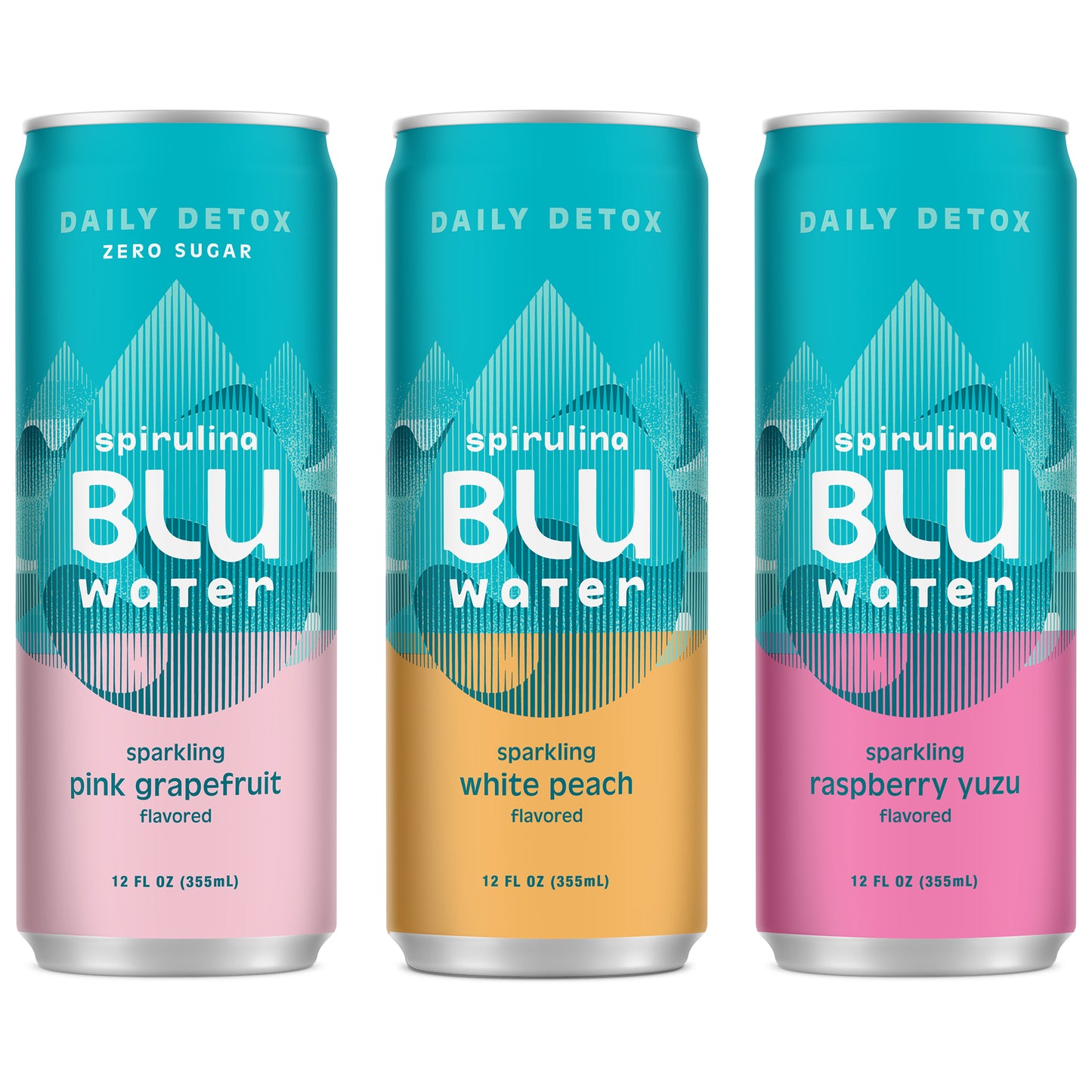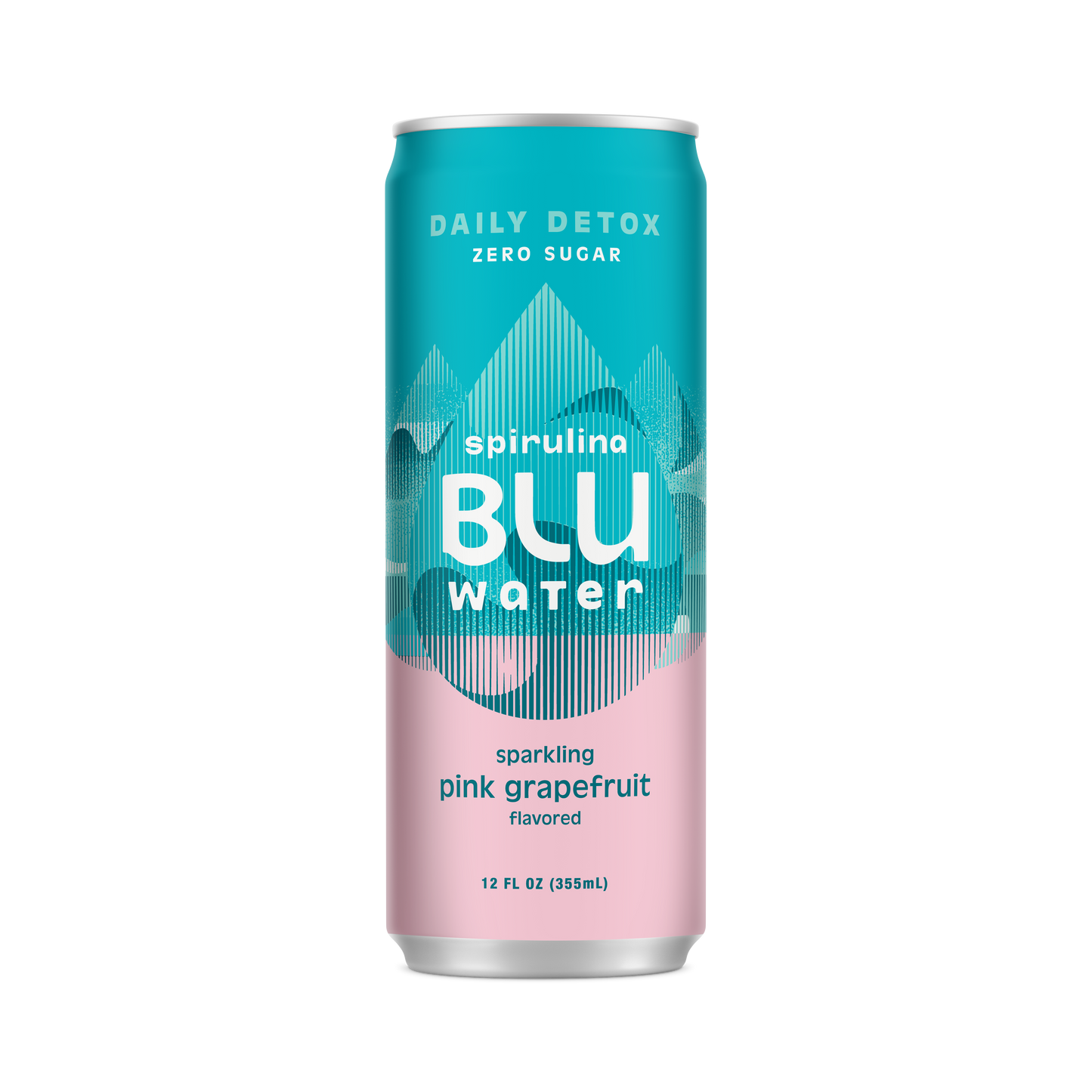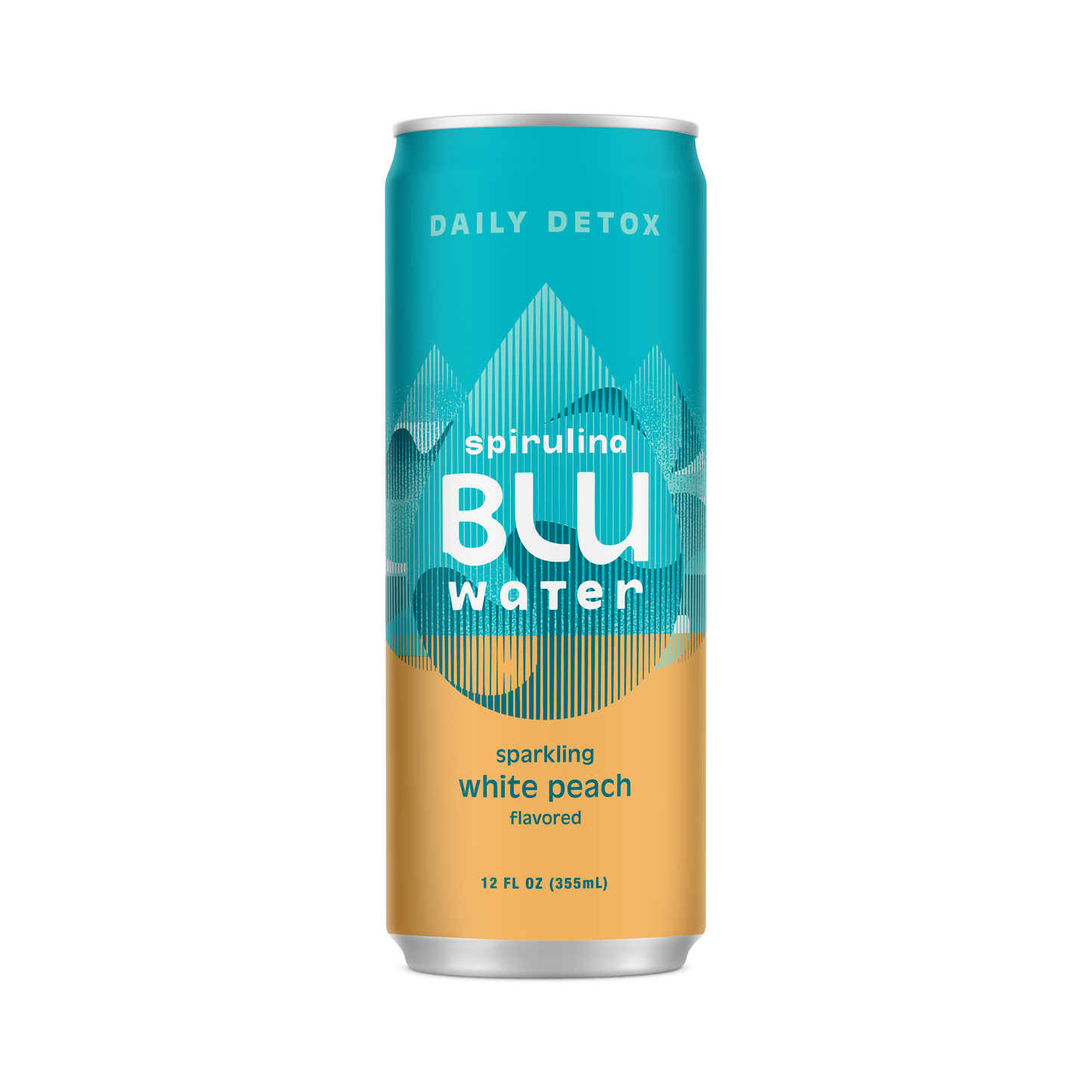
Why is Spirulina the Go-To Ingredient in Detox Drinks?
Blue spirulina is a powerhouse of antioxidants, with phycocyanin leading the charge against oxidative stress. Its unique ability to bind with heavy metals and support liver function has made it a favorite in detox water and other detox drinks for cleansing. When you think of healthy sparkling drinks with sustainable ingredients, spirulina should be at the forefront.
What does Spirulina taste like?
Spirulina boasts a distinct, somewhat earthy flavor, often likened to the ocean or seaweed. At FUL Foods we have developed our own type of Spirulina ingredient without the fishy taste called FUL BLU. This is a naturally blue protein pigment that is stable across a range of heat treatments and pH ranges, has a higher digestibility score than soy protein, and an antioxidant capacity that is on par with rich plant-based sources. Now, you can enjoy the benefits of Spirulina without the overpowering taste by drinking FULwater straight from the can - or you can mix it into your favorite smoothie recipe or add a splash of BLU to your next mocktail!
FULwater has innovated with flavors like white peach, pink grapefruit and lemon & ginger, making the spirulina drink experience even more delightful.
What is spirulina made of?
Spirulina, a type of algae spirulina, thrives in fresh waters. It's a treasure trove of proteins, vitamins, minerals, and antioxidants like phycocyanin. This rich blend makes products like spirulina supplements and organic spirulina drinks a favorite among health enthusiasts.
Where Does Spirulina Come From?
Originating from subtropical and tropical regions, spirulina has a rich history. Traditional cultures in regions like Africa and South America have long harvested spirulina from natural lakes. However, with the rising demand for products like spirulina capsules and blue spirulina drinks, its cultivation in controlled environments has become prevalent. Our team at FULwater prioritizes the purity and quality of our spirulina, ensuring consumers receive the best of this ancient superfood.
Why is Spirulina Called a Superfood?
The term "superfood" is often reserved for nutrient-dense foods with potential health benefits. Spirulina fits the bill perfectly. Packed with proteins, vitamins, minerals, and antioxidants, it's a nutritional powerhouse. Its potential benefits span from supporting immunity and combating oxidative stress to supporting overall cellular health. The presence of essential fatty acids, B-vitamins, iron, and phycocyanin further cements its status as a superfood. Whether you're exploring spirulina seeking detox avenues, anti-inflammatory solutions, antioxidant effects or even simply craving a refreshing spirulina drink, spirulina's diverse offerings make it a sought-after ingredient in the health and wellness sphere.
Blue Spirulina vs. Green Spirulina: Which Reigns Supreme?
Both blue and green spirulina are packed with health benefits. However, blue spirulina, with its rich phycocyanin content, not only offers a vibrant hue but is also loaded with antioxidants, making it a preferred choice for many.
The Impact of Spirulina on Your Body
Studies indicate that spirulina might have a plethora of health advantages. Its antioxidant content, especially phycocyanin, is linked to countering oxidative stress, promoting cellular health. Moreover, its anti-inflammatory attributes can soothe various conditions.
www.ncbi.nlm.nih.gov/pmc/articles/PMC4320919/
Spirulina and Hair: A Match Made in Heaven?
Spirulina, packed with essential nutrients like protein and vitamins, is a go to for hair benefits. The protein in spirulina has been linked multiple times to luscious, healthy hair and promoting scalp health. It's no wonder it's a key ingredient in many hair care products.
Karkos PD, Leong SC, Karkos CD, Sivaji N, Assimakopoulos DA. Spirulina in clinical practice: evidence-based human applications. Evid Based Complement Alternat Med. 2011;2011:531053.
Trüeb RM. Oxidative stress in ageing of hair. Int J Trichology. 2009;1(1):6-14.
Why Choose Spirulina Beverages Over Other Forms of Consumption?
Navigating the spirulina benefits landscape, one might get overwhelmed with choices like spirulina capsules, spirulina powders, and spirulina supplements. However, spirulina drinks, especially those curated by FULwater, are emerging as a game-changer. These beverages seamlessly fit into the trend of healthy sparkling drinks and detox water. The convenience of a canned spirulina drink is unparalleled, especially for those leading busy lives. Ditch the hassle of measuring out blue spirulina powder or popping spirulina capsules. With FULwater, you get the essence of spirulina packed with sustainable ingredients, ready to be enjoyed anytime, anywhere. It's not just a drink; it's a lifestyle choice that aligns with modern health and wellness goals.
Where Can I Buy Spirulina Drinks?
Today, Spirulina is widely available online and in retail stores! FULwater our Spirulina beverage is available on our website and at select stores like Erewhon and Bristol Farms, it's the perfect way to incorporate spirulina benefits into your daily routine.
The FUL Foods Process
FUL Foods has developed a highly sustainable process that utilizes CO2 as the main input as feedstock for Spirulina instead of producing it as an output. It also requires no arable land, fertilizers or pesticides and recycles 85% of water used!

Spirulina's journey, from its natural aquatic habitats to the shelves of health stores and the offerings of brands like FULwater, is a testament to its unparalleled nutritional profile. As research continues to unveil its potential benefits, spirulina's stature as a superfood is only set to soar. Whether you're a health enthusiast or someone just starting their wellness journey, spirulina promises a rendezvous that's both enriching and enlightening. Dive into the world of spirulina and discover the myriad treasures it holds!



